The popular image of the law school experience is one of intense classroom environments and even more intense reading loads. So how much time do law students actually spend buried in the books? According to LSSSE data, the average full-time U.S. law student spent 18.6 hours per week reading for class during the 2017-2018 school year. Part-time students tended to spend slightly less time reading per week compared full-time students, presumably because of their lighter course load. This translated to 15.7 hours spent reading each week for the average part-time U.S. law student.
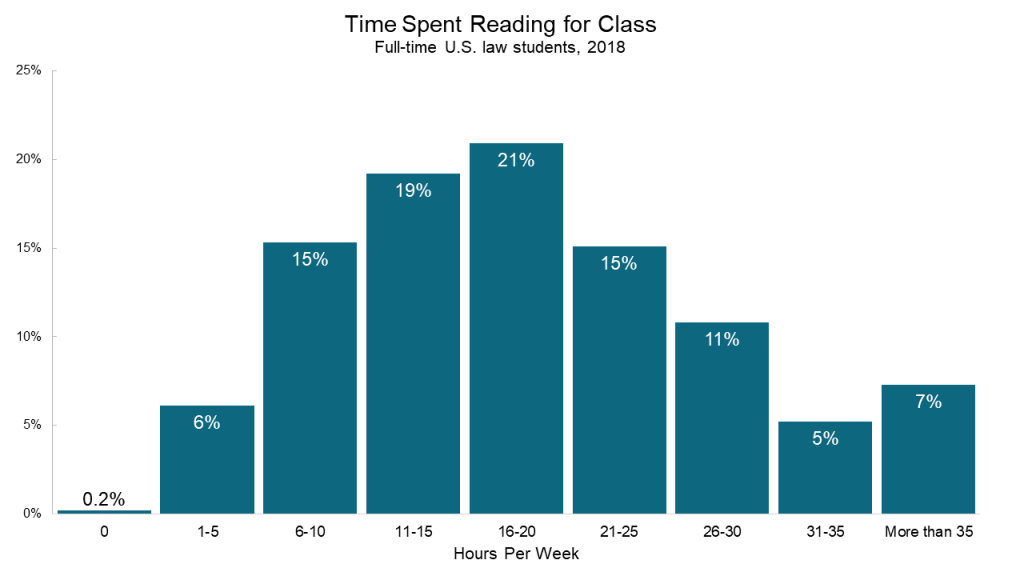
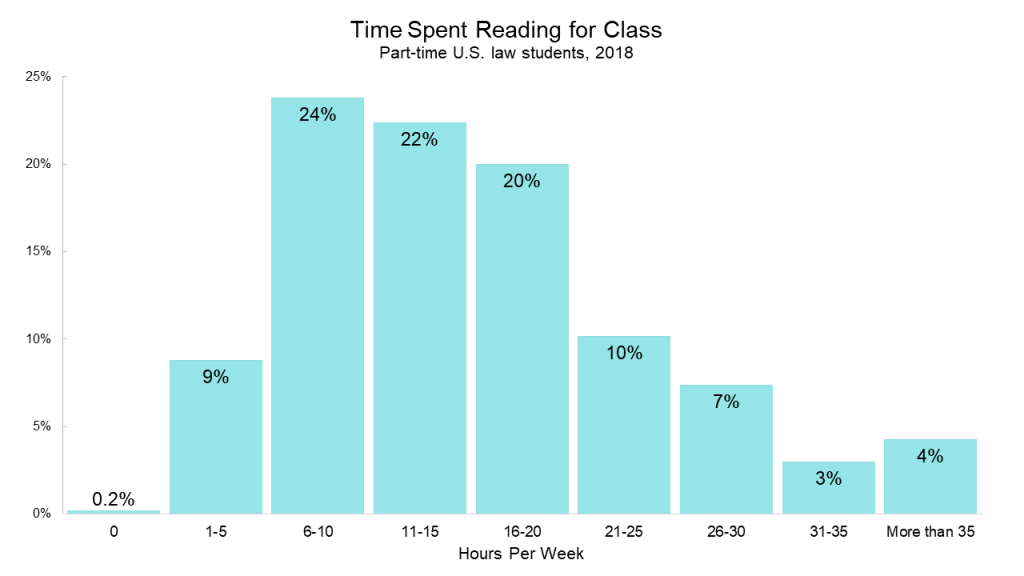
Perhaps not surprisingly, newer law students tend to devote more time to reading for class than their more seasoned law school colleagues. In 2018, full-time 1L students read for 21.7 hours per week while full-time 3L students read for approximately 15.1 hours. Full-time 2L students fell right in between with an average of 18.3 hours per week. Part-time students follow a similar pattern, except with a smaller drop-off across years.
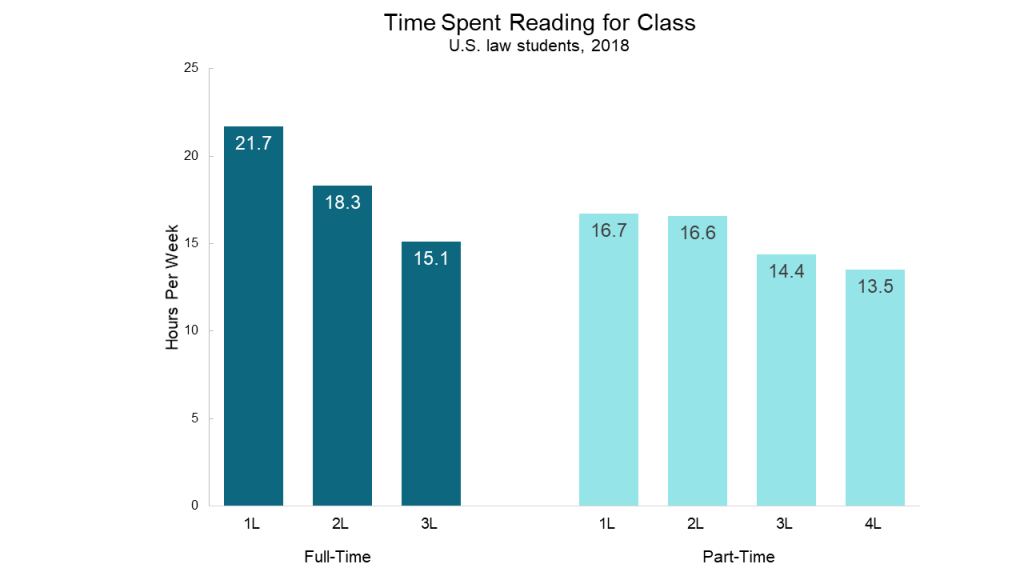
Certainly there are other ways to prepare for class besides reading. LSSSE also asks how much time students spend each week on non-reading class preparation, which includes activities such as trial preparation, studying, writing, and doing homework. Interestingly, full-time students and part-time students spend approximately the same amount of time on non-reading activities, with full-time students logging around 11.0 hours per week compared to part-time students’ 10.2 hours.
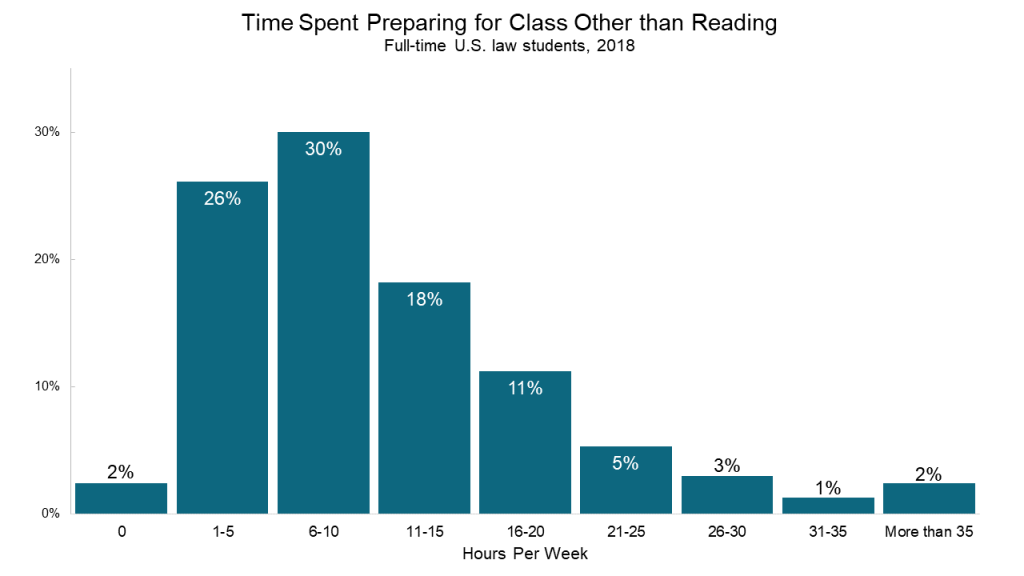

The pattern for time spent on non-reading class preparation activities across class years looks similar to the pattern of reading preparation activities, with the number of hours per week decreasing for students in later stages of the program for both full-time and part-time students.
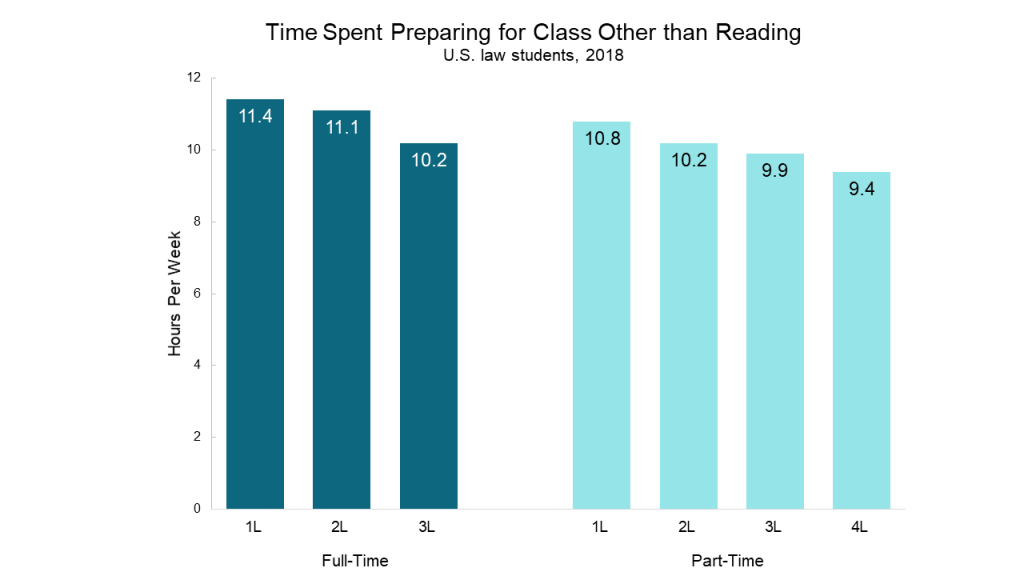
How does this preparation for class intersect with students’ experiences in the classroom? In our next blog post, we will share some surprising findings about how the amount of time spent preparing for class is related to both grades and to students’ perceptions of how effectively instructors use class time.
